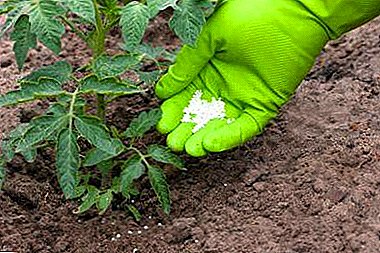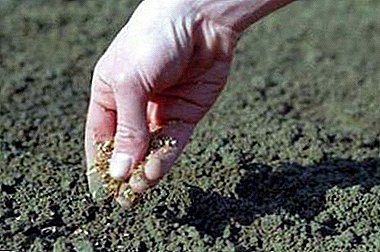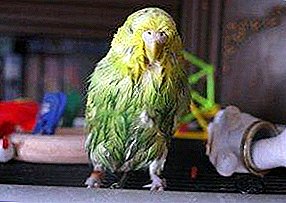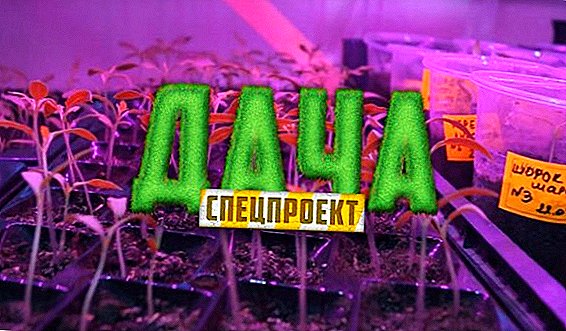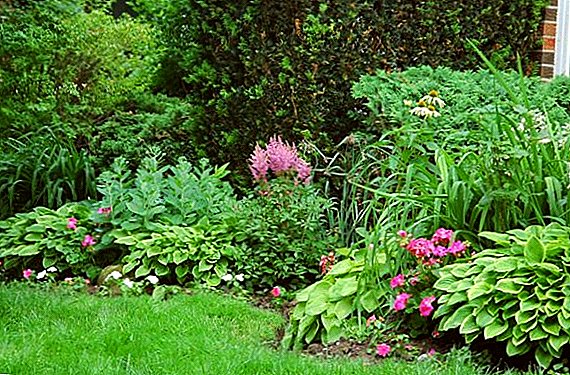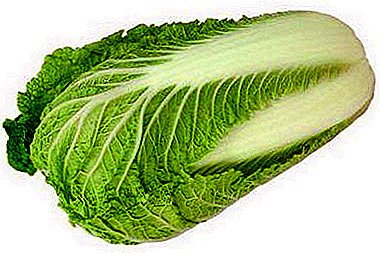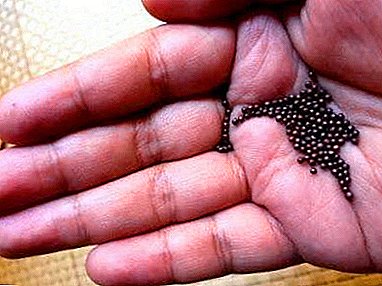
Beijing (Chinese) cabbage began to be grown in China, but is now becoming more common in other countries due to the large amount of vitamins and dietary properties.
That is what she liked to customers, including gardeners, trying to grow it both at home and in garden beds. And this article focuses on the seeds of Chinese cabbage. Namely: what are the varieties; where it is better to buy planting material; when it is better to sow; necessary inventory. And also we will tell about possible problems at cultivation of this popular vegetable.
Vegetable description
Beijing cabbage leaves have an oblong shape and form a loose head of an oval shape. Their color can range from yellow to bright green. Also at the base of the leaves have a white vein, passing to the end of the sheet. In the cut, cabbage heads are yellow-green in color.
Breeding methods
Beijing cabbage can be grown from:
- seedlings;
- seeds.
Each method has its pros and cons, but today we will talk specifically about planting seeds.
Sorta
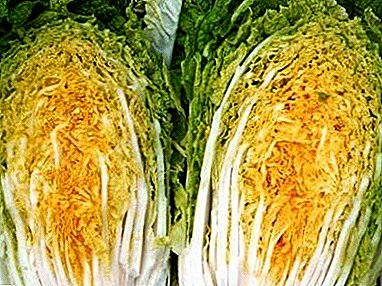 Orange mandarin - early, stress-resistant grade, suitable.
Orange mandarin - early, stress-resistant grade, suitable.- Garnet - mid-season variety (the first harvest is harvested in 70-80 days), for cultivation in Siberia. Resistant to many diseases.
- Express - unpretentious, shows resistance to temperature extremes. Suitable for growing in greenhouses, also in Siberia.
- Wineglass - Late variety (growing season lasts 70 days), demanding to care, more suitable for the southern part of Russia.
- Vorozheya - early ripening, high-yielding variety, resistant to bolting. But you can only use fresh.
- Russian F1 size - variety adapted to the climate of the middle lane. Differs in the big sizes.
Where to buy?
Usually seeds can be found:
- in online stores;
- in supermarkets;
- stalls.
On a note. The cost starts at around 10 rubles and reaches up to 100, depending on the variety.
Advantages and disadvantages
Pros:
- most purchased seeds do not require preparation (read on the package);
- difficulty growing in the south due to probable skull marks
Minuses:
- if the seeds are collected from homemade cabbage, then you need to sort them out and leave only larger than 1.5 mm;
- domestic seeds require careful preparation and dressing
Ways to grow properly: step by step instructions
When to do this?
The time of planting seeds in the ground depends on the variety of cabbage:
- leaf varieties - from late April to mid-June;
- heading varieties - from mid-July to mid-August.
If you plan to grow through seedlings, they should be sown at the end of March in separate pots.
Used inventory
You can use standard garden tools:
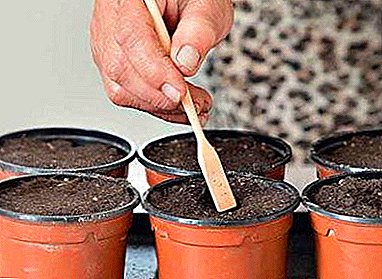 small shovel for pots;
small shovel for pots;- a shovel for digging up the soil at the time of adding nutrients;
- a tray containing peat tablets;
- watering can.
Also, if you are going to plant seedlings, it is best to use peat tablets. A peat tablet is a cylinder made from dry peat with the addition of an antibacterial component, a growth stimulator and mineral fertilizers.
To prepare tablets for planting seeds, you must:
- Tablets must be placed in a pan, pour water into the bottom so that it absorbs the tablets without deforming them, wait a little while the water is absorbed and pour in more.
- Tablets should increase in size.
Important! In case you want to use your soil, use individual pots, not common containers.
Getting sprouts
To germinate Beijing cabbage, the seeds are placed on wet gauze, removed in a warm place and waiting for the shoots to sprout, which should occur in 3-6 days. If they do not grow, then you need to take other seeds.
Preparatory stage
If you bought seeds, they do not require soaking. In case of using home seeds, it is recommended to check their germination:
- To do this, the seeds are soaked in saline for 17-19 hours.
- Suitable seeds float, empty go to the bottom.
Selected seeds are washed in clean water, put in a wet cloth for swelling for 2-4 days.
Also, home seeds require dressing:
- For this, seeds are soaked in a 1% solution of potassium permanganate for 20-30 minutes.
- After soaking in such a solution is recommended soaking in a growth stimulator, for example, "Appin" or "Zircon".
If you are not going to use your pots, but not peat tablets for growing seedlings, then such mixtures are used for soil preparation:
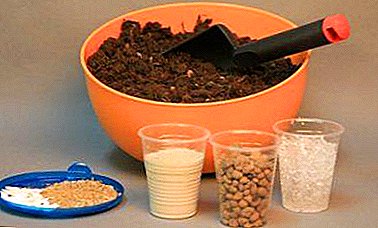 mixing 2 parts of coconut substrate with 1 part of humus;
mixing 2 parts of coconut substrate with 1 part of humus;- Mix the turf and sand in equal parts and add ash (1 teaspoon per liter of mixture);
- You can make mineral fertilizers: mix 1 tablespoon of superphosphate, 1 tablespoon. potassium nitrate, 1 tbsp. l ammonium nitrate.
If you do not want to use seedlings, and plant the seeds immediately in open ground, then you need to learn how to prepare the soil. If the soil requires liming, it is necessary to add lime or dolomite flour to it in the fall. In the spring they bring in compost or humus per square meter.
Getting seedlings
- Beijing cabbage is not good at planting seedlings, so it’s better to plant seeds in separate pots with loose soil, 2-3 pieces each.
- Seeds deepen into the soil by 1-2 centimeters.
- After that, the pots must be put in a warm and dark place before germination.
- After their appearance, the pots are placed in a bright place, in which the temperature does not exceed 7-9 degrees, they are watered as necessary.
- After the appearance of leaves in each pot, leave only ONE of the strongest sprout, and the weak ones pinch in order not to injure the roots.
- Seedlings are planted in a permanent place in 3-4 weeks.
From the video you will learn how to sow Peking cabbage:
Watering and feeding
- Beijing cabbage loves moisture, so it needs regular watering.
- It is necessary to feed, but the first application of fertilizer is possible only two weeks after placing the seedlings in a permanent place. You can use the infusion of mullein (per 1 liter of infusion per 10 liters of water).Note! Under each plant poured 1 liter of solution.
The amount of feed with this fertilizer depends on the time of planting: the solution planted in spring is watered three times, in the fall - twice, about once every 1.5-2 months.
- When sowing seeds in a seedless way, the ground is covered with a film until the first shoots appear.
How to plant in the beds?
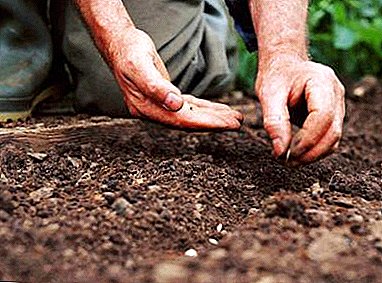 If you use the seedless method, then the seeds need to be planted in a loose, moist soil on a bright area. It is not recommended to plant Beijing cabbage seeds in the places where tomatoes, beets, and cruciferous were previously cultivated due to common diseases.
If you use the seedless method, then the seeds need to be planted in a loose, moist soil on a bright area. It is not recommended to plant Beijing cabbage seeds in the places where tomatoes, beets, and cruciferous were previously cultivated due to common diseases.- The wells must be placed at a distance of 10-15 centimeters when grown on a salad, and when they have to be planted on cabbages, the distance is increased to 30-40 centimeters. After the landing, the ground is covered with a film until the first shoots appear.
- If you are using a rassadny method, then transplantation should be carried out when 4-5 true sheets appear.
- Seedlings of Beijing cabbage are transferred to the ground along with soil from a pot or a peat tablet, the shell of which will dissolve over time in order not to injure the roots.
- Before planting seedlings need hardening. Therefore, 10 days before planting, the cabbage must begin to make out on the street, gradually increasing the time.
On a note. Seedlings can be planted in open ground only after the cabbage will stay on the street day.
- The distance between the holes is observed the same: for salad - 10-15 centimeters, for heads - 30-40 centimeters.
Watch the video on how to sow Peking cabbage in the garden:
Possible problems
Pests
Of the pests you can find slugs and cruciferous flea.
- Slugs can be discarded in several ways:
- bark obstacles;
- bait in the form of beer, citrus, dairy products;
- special solutions.
- To combat cruciferous fleas you can use:
- abundant watering of plants;
- a mixture of ash and tobacco dust in a 1: 1 ratio;
- a mixture of ash and hydrated lime in a ratio of 1: 1;
- a mixture of ash and road dust in a 1: 1 ratio.
Diseases
The most common diseases are kila, blackleg, gray mold.
 Quila - A disease in which nodules form on the roots of a cabbage. As a result, the plant ceases to grow. The keel is formed at low pH, so before planting in a permanent place you need to neutralize it with compost and lime.
Quila - A disease in which nodules form on the roots of a cabbage. As a result, the plant ceases to grow. The keel is formed at low pH, so before planting in a permanent place you need to neutralize it with compost and lime.- Blackleg affects sprouts seedlings of Peking cabbage. At the same time, blackening and narrowing of the stem is observed, which leads to obstruction of nutrient access to the leaves, and after that, to the death of the cabbage. To prevent the need to disinfect the soil and seeds, take care of the plant.
- Gray mold damages heads of cabbage in the period of ripening or storage. To prevent the disease, it is necessary to spray the plantations with fungicides (“Amistar”).
Beijing cabbage is a capricious plant in the care, so before growing it is necessary to familiarize yourself with all the nuances, and during it observe all precautions. But even such difficulties are worth it to grow such a nutritious plant.


 Orange mandarin - early, stress-resistant grade, suitable.
Orange mandarin - early, stress-resistant grade, suitable. small shovel for pots;
small shovel for pots; mixing 2 parts of coconut substrate with 1 part of humus;
mixing 2 parts of coconut substrate with 1 part of humus; If you use the seedless method, then the seeds need to be planted in a loose, moist soil on a bright area. It is not recommended to plant Beijing cabbage seeds in the places where tomatoes, beets, and cruciferous were previously cultivated due to common diseases.
If you use the seedless method, then the seeds need to be planted in a loose, moist soil on a bright area. It is not recommended to plant Beijing cabbage seeds in the places where tomatoes, beets, and cruciferous were previously cultivated due to common diseases. Quila - A disease in which nodules form on the roots of a cabbage. As a result, the plant ceases to grow. The keel is formed at low pH, so before planting in a permanent place you need to neutralize it with compost and lime.
Quila - A disease in which nodules form on the roots of a cabbage. As a result, the plant ceases to grow. The keel is formed at low pH, so before planting in a permanent place you need to neutralize it with compost and lime.